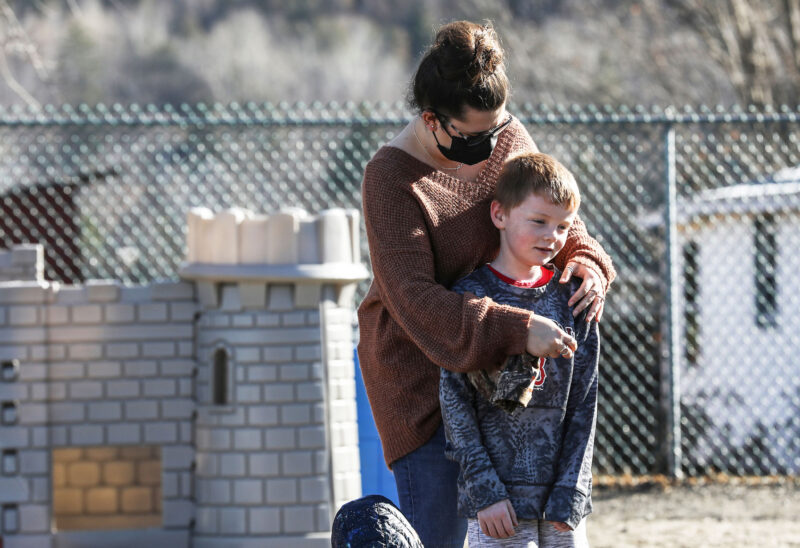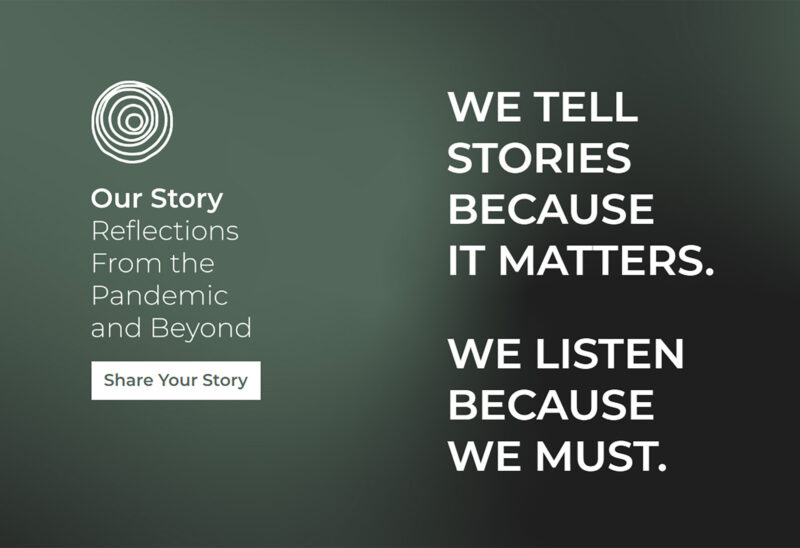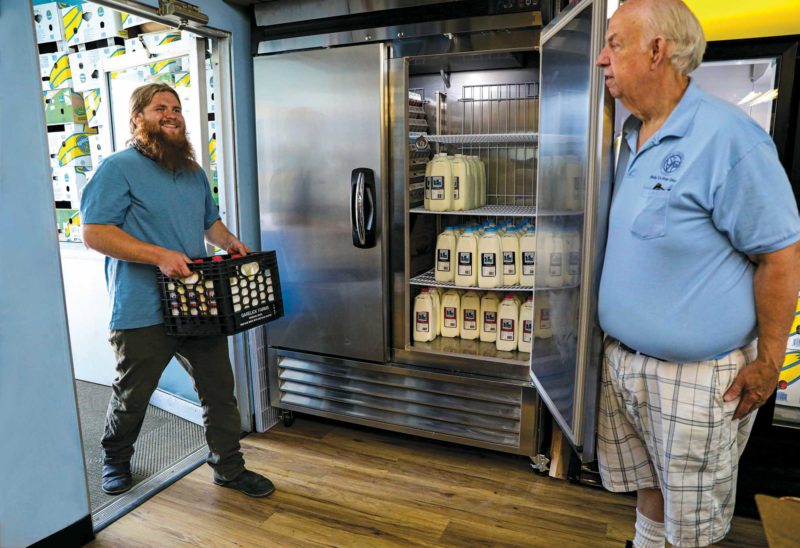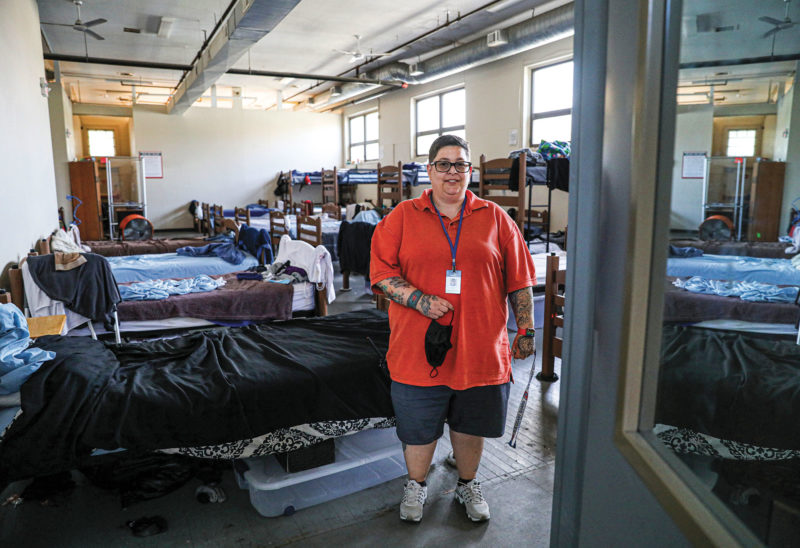It was a Monday when the team at HealthFirst, a nonprofit community health center with locations in Franklin and Laconia realized they needed to change almost everything about how they delivered care. The COVID-19 pandemic meant that having patients see providers face-to-face for non-urgent care was simply no longer safe. They would have to switch almost the entire practice to a telemedicine model — using videoconferencing and phones for most appointments.
As frontline medical workers continued caring for patients with urgent needs, people behind the scenes shifted into high gear.
New procedures had to be written, an entire staff trained on new software and hardware and workflow.
On Wednesday — of that same week — HealthFirst launched its new telemedicine services.
“Was it smooth the first day? No,” says practice manager Stacey Benoit, frankly. But by the second day it was a lot better.
With a grant from the New Hampshire Charitable Foundation, HealthFirst — which provides primary and behavioral care and integrated care for substance use disorders — has now bought a fleet of new laptops, high-quality video cameras and microphones, scaled up the bandwidth of the internet service and created new wifi hotspots, paid for needed software and created portable workstations with mobile phones for clinicians who are seeing possible COVID-positive patients in a tent in the parking lot.
“It just speaks to what we hear a lot nowadays: that the American populace has embraced the fact that we need to step up and understand that we are in a different time and we need to do things very differently,” said Russell Keene, president and CEO of HealthFirst. “That’s certainly what we saw here.”
Grants from the Foundation’s Community Crisis Action Fund and Substance Use Disorders portfolio of funds are helping nonprofit community health centers and recovery support centers all over the state provide telehealth services to some of the state’s most vulnerable populations. Generous donors have already contributed more than $2.9 million to the Community Crisis Action Fund, grants from which are meeting a variety of urgent needs statewide.
“When we started to hear from those sectors, the biggest thing we heard was that they didn’t have the technology to be able to do it,” said Tym Rourke of the Charitable Foundation’s community impact department. Flexible funding was able to cover costs of needed technology.
Safe social distancing meant recovery centers around the state have had to close their brick-and-mortar centers. Advocates were worried about the effect on people whose recovery is built around face-to-face interaction with peer coaches and at in-person meetings.
“We couldn’t have more disconnection than we do now — and that’s the scary part,” said John Burns, director of SOS Recovery Center, which has locations in Rochester, Dover and Hampton. “People who have built their recovery through connection don’t have connection right now. Who’s falling through the cracks?”
But many recovery centers are quickly adapting to a telehealth approach.
Burns started reaching out to colleagues around the country on a Sunday night for expertise on how to provide confidential and secure peer recovery — including group meetings, one-on-one recovery coaching and family supports — via video and phone. Working with Unity Recovery in Philadelphia, the Alano Club of Portland, Oregon and WEConnect Health Management in Seattle, he crafted a plan.
By the next night, SOS had a family recovery support meeting launched online, with a full schedule of meetings for the week with SOS staff acting as facilitators. Now, SOS is running online recovery support meetings every day of the week, from 7 a.m. to 11 p.m.
A grant from the Foundation allowed for the purchase of six phones (and contracts) for staff to use to offer recovery supports, upgraded laptops, an enterprise-level Zoom account, plus purchase of an app and the integration of chat technology on the center’s website.
Recovery coaches are reaching out to as many as 50 people each day, who have received support through the center in the past, offering to connect them with one-on-one peer support.
“If they are struggling and isolated, they may feel too overwhelmed to reach out to us,” Burns said. “Let’s go to them. This is a critical juncture and we need to be reaching out.”
One unanticipated effect of the new, online meeting format: More people joining SOS’s meetings than ever before, and from all over the world.
“We are reaching people who have never in their lives accessed a face-to-face meeting,” Burns said. “I can only imagine how many people we are touching who we would not have otherwise touched. There is no way these meetings go away after we open our doors again.”
Part of what made the telemedicine shift possible for community health centers and some recovery support centers was a relaxing of billing regulations under federal Medicaid and Medicare programs. Now, appointments done via phone or video are billable to insurance, whereas in the past they were not.
If those relaxed regulations become permanent, providers say, that could be a silver lining for access to care.
“It does solve some of the problems about the immobility of a lot of our patients who are low-income, uninsured or elderly and who have problems with transportation — especially in rural areas, said HealthFirst CFO Ted Bolognani.
Last week, an elderly and immune-compromised patient with diabetes and hypertension called HealthFirst for care for his diabetes. He had not shown up for a string of six previous in-person appointments. He met with his medical provider over the phone, who ordered an in-home check for him through the VNA, plus new medication and a follow-up appointment via telehealth. The new technology actually helped him finally get the care he needed.
The rapid adaptations have shown the remarkable resilience of the nonprofit health providers.
“We got up one day,” Keene said, “and everything was different.”
Except their commitment to deliver on their mission.



















